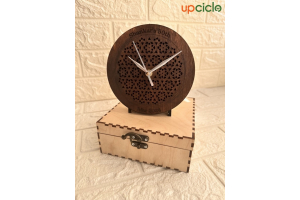Shop slow, shop right.

Today's society encourages us to consume more quickly than ever before. We can afford to discard items we no longer want and replace them promptly, thanks to mass production. As a result, things are engineered to last less time and to be of worse quality. To grow the necessary raw materials, large amounts of water, pesticides and other hazardous chemicals, like fabric dyes, are required. These are harming the Earth's soil, biodiversity, and local water sources. which is why I'm here to tell you about switching to Sustainable, Slow fashion
The clothing and textile sector is predicted to emit roughly 1.7 billion tonnes of CO2 each year, making it a major contributor to global warming.
Why fast fashion should be stopped
Fashion is a filthy business, to put it bluntly. It pollutes our water supply, fosters overconsumption, and abuses factory workers, especially women and children all while necessitating an endless supply of scarce resources and generates massive amounts of garbage. But subsequently, it is also a means of expressing our artistic side and showcasing our personality through what we wear. This is where slow fashion comes in. Slow fashion blends a brand's practices with a customer's shopping behaviours, whereas ethical, sustainable, and slow fashion all describe efforts toward an aspirational goal—rethinking our relationship to garments. The movement aims to create an industry that benefits both the environment and everyone. In an ideal world, fashion would just be slow fashion, which we hope to see someday soon.

Different industries have unique ways of following slow fashion, whether it is routine checking in factories, using recycled or upcycled fabrics, or using less harmful alternatives to fast fashion fabrics like cotton.
Slow fashion firms strive to reduce the amount of textile waste in landfills by using slower production schedules, small-batch collections, and zero waste designs. Rather than chasing trends, these brands produce timeless and flexible items by incorporating enduring styles with layering options. Customers are encouraged to create simple wardrobes and invest in items that will last a lifetime.
Join the Sustainable Fashion movement
- Pour some love into your existing closet. Look through some old pieces and try to remember some good memories that you shared while wearing them.
- If you are struggling with where to start, pull out some guides to help you out. Here are some you can check out. ,
- Build a Capsule wardrobe: Check out some basic pieces at Upciclo Fashion from bamboo to style up or down depending on the occassion.

- Keep in mind to make thoughtful choices and purchases. Begin by resisting the desire to make impulsive purchases. Before you go out and get a new pair of shoes, call a buddy or look through your current wardrobe to see what would go with what you already have. When you're ready to buy anything new, check out sustainable high-quality options like this Bamboo Workout Tee that will last you a long long time.
- Do some quality research. If you come across a new slow fashion business, take the time to research the firm and make sure you're spending your money wisely. Is it gradual, long-term, and ethical for all parties involved? Is there any information on how and where the clothing is made available from the brand? How many collections does the brand release each year? Answering these questions will help you make the right choices for the environment and well-being of our kids and grandkids.
Quality Over Quantity
When it comes to clothing, we are frequently constrained by financial constraints. However, purchasing high-quality things that will last a long time is generally a more cost-effective option than purchasing garments that would break after only a few uses. You will not only save money but also squander less by investing in a few high-quality goods.




